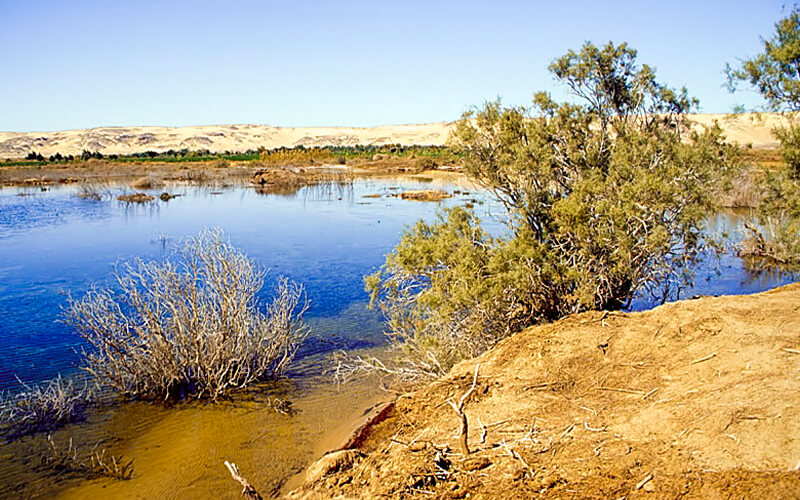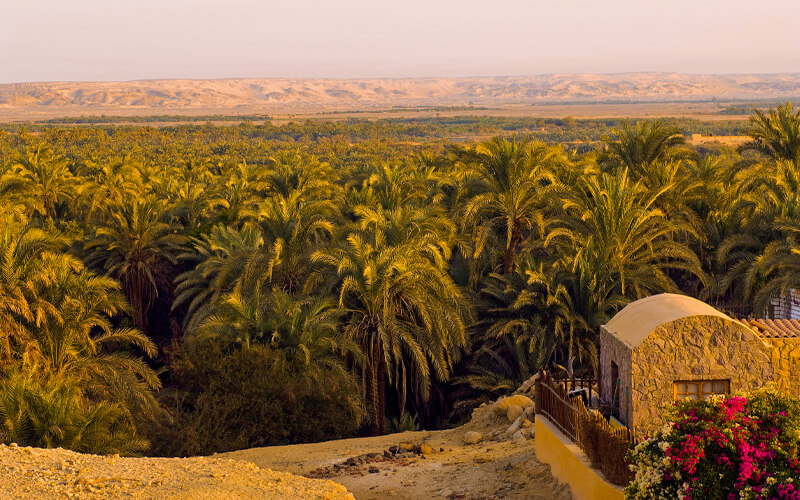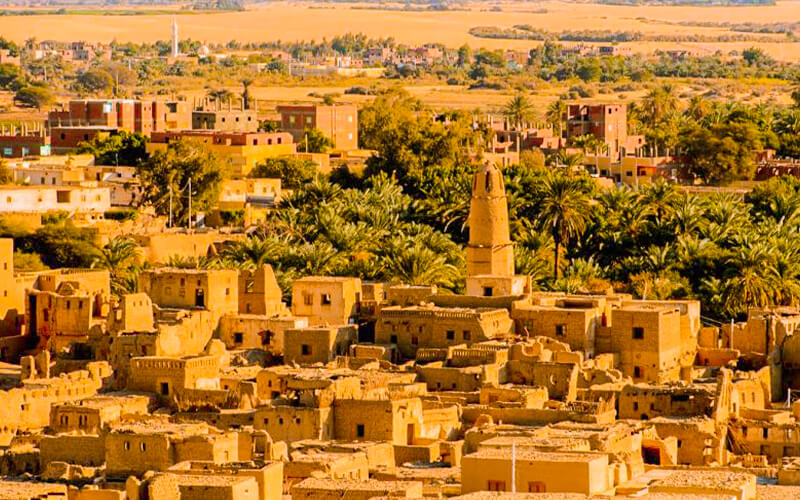Bahariya Oasis
The Bahariya Oasis is a fascinating place to visit because its natural setting is full of ancient buildings and celestial marvels.
The Bahariya Oasis, one of Egypt’s most hypnotic locations, was created amid the harsh, lifeless environment of the country’s western desert. The desert of the west may include this oasis. Due to its historical importance and connection to ancient Egyptian civilization, the oasis is not simply stunning to look at. In addition, some of our time’s most important archaeological finds have been made in the oasis.
The Arabic word “bahar,” which means “sea,” is the source of the name “Bahariya.” This alludes to the Mediterranean Sea, which has historically been a dividing line between northern Egypt and the rest of Africa. Our little oasis was known as “Desdes” by the Egyptians and “Parva” by the Romans.
If you’re looking to spend a fantastic vacation in Egypt check out our Egypt Excursions with our qualified Egyptologist with the best Egypt travel guide in Egypt and check Egypt Oases.
Location of Bahariya Oasis
About 370 kilometers north of Cairo is the Bahariya Oasis. It is 94 kilometers long, 40 kilometers wide, and covers a total area of 2,000 square kilometers. In the middle of the oasis, right in the middle, is the city of Bawiti, the center of government.
The name Bahariya Oasis
It was well known that the name Bahariya came from the Arabic word “Bahr,” which means “Sea” in English. In ancient times, the name referred to the Mediterranean Sea and Egypt’s northern regions. The Bahariya Oasis was known as “Desdes” by the Pharos, and “Parva” or “the tiny oasis” by the Romans.
The History of Bahariya Oasis
The area that is now the Bahariya Oasis was first settled when Egypt was in the middle of its rule (1975 BC–1640 BC). During the whole 18th dynasty, the Oasis was a political powerhouse because of its location on a trade route that connected the western desert, the tribes of Libya, and the Nile valley. During the 26th dynasty, the oasis was a major trade hub in the western desert and was very important to the economy of the area. bahariya has been around since the time of the Greeks and Romans (332 BC-395 AD).
Bahariya Oasis’s Famous Landmarks
1- The eleven Golden mummies:
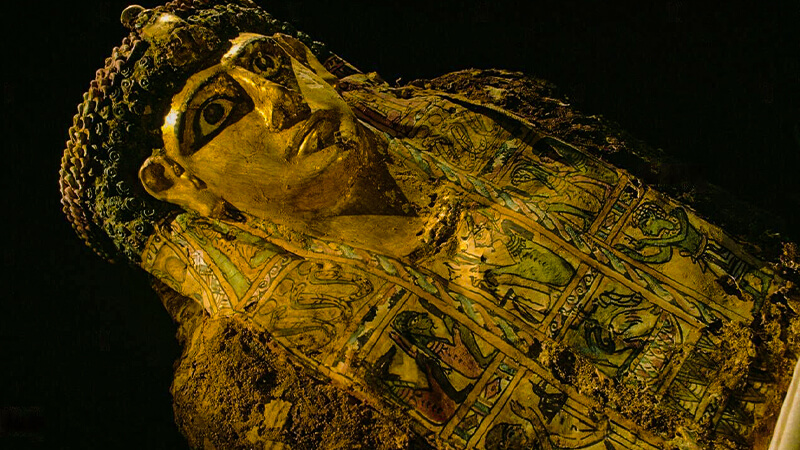
Tomb of golden mummies in Bahariya Oasis
In Bahariya Oasis, 11 additional mummies that were all members of the same Greco-Roman family were found by Egyptian researchers. One of these mummies belonged to a 3-year-old boy. He was covered in a golden mask that represented the child’s state of grief for his parents, who had died before him. He was buried among us.
2- Lake Marun
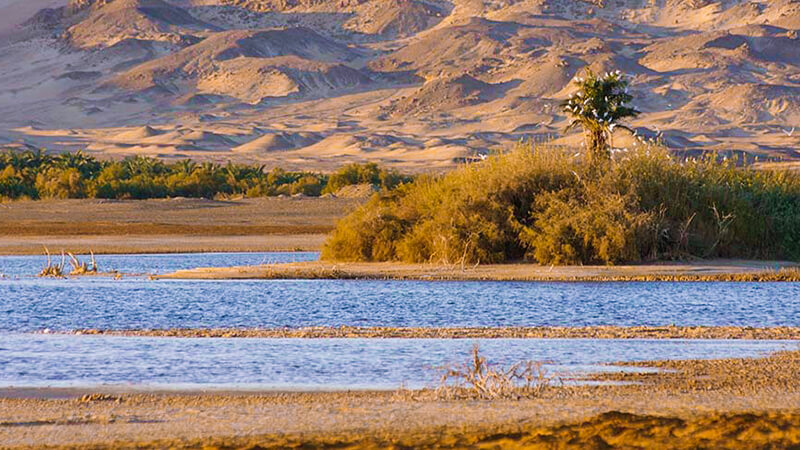
Lake Marun in Bahariya Oasis
Lake Marun is one of many salt lakes in the Western Desert of Egypt. Lake Marun is known for being a place where birds stop on their way to other places. It is also a beautiful place to take pictures of the sun going down.
3- Gebel al-Dist

Gebel Al dist in Bahariya Oasis
The area around Bir Ghaba is dominated by three mountains: Gebel Maghrafa, also called Mountain of the Ladle, and Dist (which are separated by just 50 meters). The smaller mountain is called Maghrafa. It is an iron-rich butte with a base diameter of 600 meters (1920 feet) and a height of 15 meters (49 feet) (48 feet). It was made during the Oligocene period. The name “Paralititan Stromer,” which means “Stromer’s Tidal Giant,” was given to a new dinosaur found by teams from Penn and the Egyptian Geological Museum. The dinosaur was found on the shores of an ancient sea. It was named Ernst Stromer after the German paleontologist Ernst Stromer, who found it in 1914 at the foot of Gebel District in Bahariya. The name also comes from the fact that the dinosaur was very big and was found on the shores of an ancient sea.
The impressive pyramid-shaped top of Gebel Dist can be seen from almost every spot in the oasis. At first, people thought that dinosaurs came from North America. But in the early 20th century, bones of dinosaurs were found there, showing that this was not the case.
4- Gebel al-Ingleez
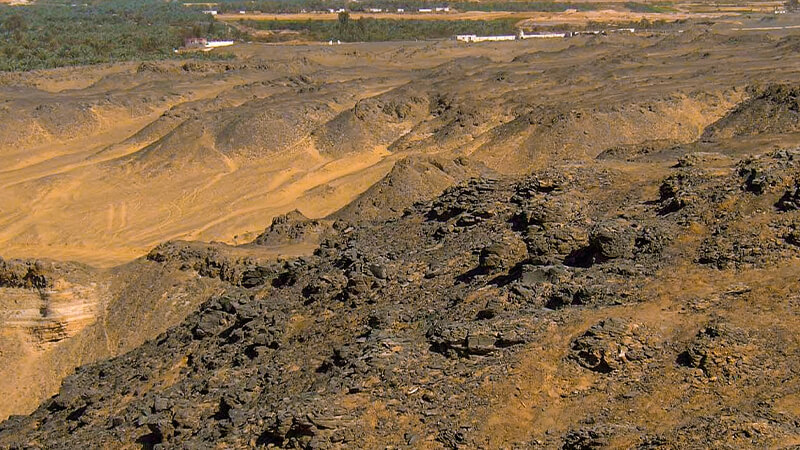
Gebel Al Ingleez in Bahariya Oasis
The English Mountain, also known as the Black Mountain, was named after an observation station used by a British commander named Captain Williams during World War I to monitor the movements of Libyan Senussi tribe members on the prowl. The vast views of the oasis and the desert beyond are the actual draws to come up here, although a few minor portions of the observation station are still visible.
5- Crystal Mountain
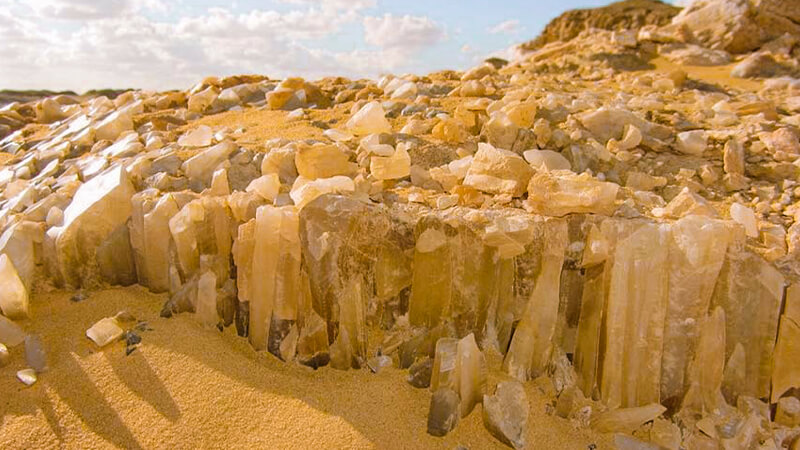
Crystal Mountain in Bahariya Oasis
Crystal Mountain is in the north of Egypt, in the White Desert, between the oasis towns of Bahariya and Farafra. The crystals of calcite and/or barite (Schwerspat, BaSO4) make up these types of rocks (CaCO3). During the building of a road between Farafra and Bahariya, there was an accident that exposed and damaged part of the hill.
6- Bawiti and Qasr
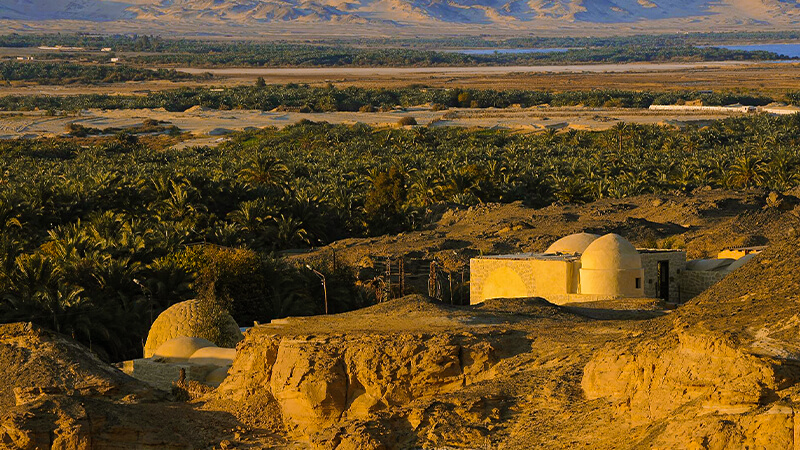
Top view of Bawiti and Qasr
Throughout its history, Qasr was the capital of the oasis. Bawiti was built right on top of an even older hamlet, which buried the people who lived there and a lot of rare artifacts. During the 26th dynasty, some of these buildings were built for the first time.
7- The tomb of Bannentiu and Ankh Amuniuf in Baharyia oasis
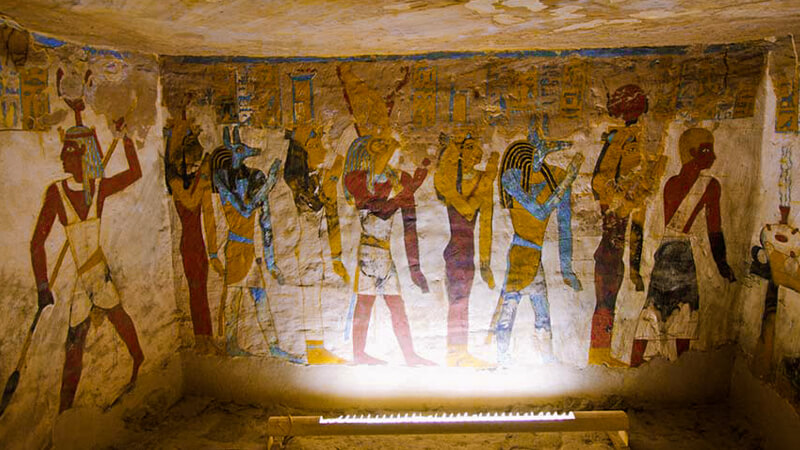
Elevated drawings on the walls of the tomb of Bannentiu and Ankh Amuniuf in Baharyia oasis
The Graveyard and Tombs of Qasr Selim (26th Dynasty) In 1938, an Egyptian archaeologist named Ahmed Fakhry found four tombs on the side of Qarat Qasr Selim (1905-1973). There are two graves that anyone can see, and both of them have beautiful decorations on them. Rich businessmen Zed-Amun-ef-ankh and his son Bannentiu are said to be buried in these two graves. They were a group of people who were still around during Ahmose II’s rule (570–526 BC). Zed-Amun-ef-burial ankh’s chamber is a hypostyle tomb, and the entrance to the chamber is five meters below the ground. The funeral procession and the Four Sons of Horus are shown in this scene.
Ancient inscriptions show that Bannentiu was both a priest and a prophet. The tomb’s burial chambers might be reachable by going down a hole that is about 6 meters deep. In the inner burial chamber, you can see pictures of the dead person’s heart being weighed and the Judgement Hall of Osiris. These scenes have been kept in great shape.
During Roman times, both tombs were once again used as burial grounds. In recent years, people have broken into tombs and taken things like mummies, beads, and amulets. We are lucky that the elaborate decorations that were put on each tomb can still be seen. This gives us more information about how this oasis has changed over time.
Bahariya Oasis is a natural environment rich in natural treasures and heavenly marvels since the dawn of civilization. The oasis is breathtakingly gorgeous, but it also has significant historical origins in ancient Egyptian society. No other location on earth compares to the captivating beauty of this oasis, so if you ever find yourself in Egypt, don’t miss out on the chance to see such a magnificent spot by choosing one of our Egypt Vacation Packages.

